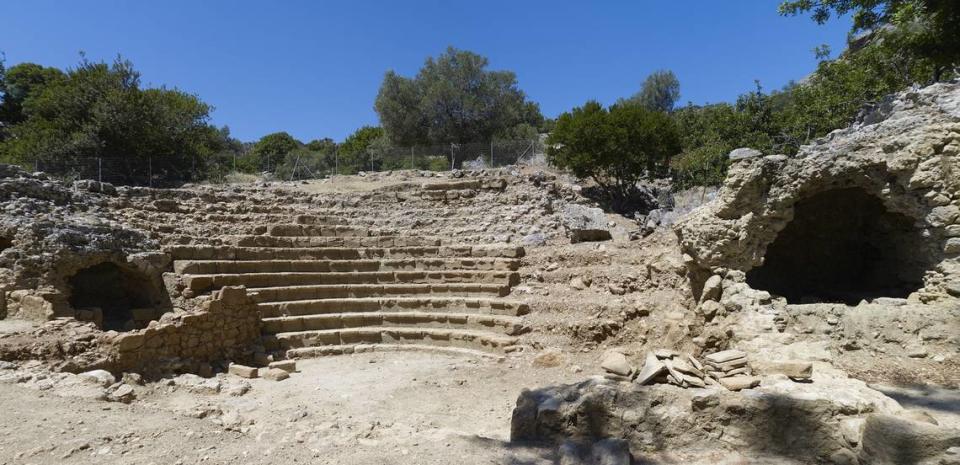Stadium? Theater? Conservatory? Large ancient Roman building discovered on Greek island
Archaeologists in Greece discovered the remains of a large structure from ancient Roman times, but mystery lingers about its purpose.
Thousands of years ago, Lissos looked out over the sea as an autonomous city and religious hub, dominating the coastline of Crete, an island about 200 miles south of mainland Greece, according to an Oct. 25 news release from the Greek Ministry of Culture and Sports.
Now, the remnants of Lissos can only be reached by a single pathway, but they still contained a remarkable discovery, archaeologists with the Greek ministry said.
Jutting out of the rocky green landscape lay a tannish-brown semicircle series of benches, Facebook photos show. Stone slabs, well-preserved closer to the center and crumbling toward the top, formed the stadium-like structure.
A passageway — with dark openings — ran underneath the structure, photos show. The hollow chambers had a vaulted ceiling, built into the ground, archaeologists said.

Archaeologists knew they’d discovered the central point of Lissos, but the 2,000-year-old Roman structure retained some of its secrets. The structure was likely a public building, possibly a conservatory or a place for the local government to gather.
The damaged portions may have resulted from an earthquake in the fourth century that shook the island and destroyed other ancient sites on Crete, archaeologists said.
The archaeological site at Lissos also has two Byzantine-era temples, archaeologists said. These house-looking stone temples look modest compared to the larger structure nearby, photos show.

Greek archaeologists also designed walking paths to reach the temples and repaired some of the ruined buildings. The ministry plans to finish excavating the public building to better understand it, the release said.
Google Translate was used to translate the news release and Facebook photo descriptions from the Greek Ministry of Culture and Sports.
From mythology to history? Archaeologists find sanctuary of Poseidon on Greek hilltop
Hercules statue — 1,900 years old but still with rock-hard abs — found buried in Greece
Viking-age swords — stabbed into a burial mound 1,200 years ago — uncovered in Sweden

